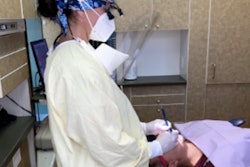
Whether you're a dentist, team member, or still in your clinical training, if you're like most, you already know the physical strains of our profession. Sadly, research has shown that strained posture and prolonged repetitive movements can lead to musculoskeletal disorders.
Up to 93% of us experience spine, shoulder, and hand-wrist pain and problems, according to a study (PeerJ, January 2018, Vol. 6: e4154).
With that, from a practical standpoint, here is the question: What can we do inside our practices, all day, every day to help ourselves? After all, we're in a no-work, no-pay profession, and a pain in our neck equals strain on our pocketbooks.
Control your patient position
From a kind-hearted place, too often we position our patients where they believe they'll be most comfortable. You know, that patient who can't rest back, and we wonder how in the world they sleep at night. We often underutilize the adjustable headrest on our chairs. Don't worry. You're not alone on this one. Per the video below, my team and I were just as guilty, until we learned better.
If you watched already, here's your cheat sheet. If you didn't, I highly recommend you view it. You'll be shocked to learn how easily we can improve our posture and our view by adjusting our headrests.
Try practicing the following steps with your team:
- As soon as your patient takes a seat, ask him or her to sit up tall.
- Ask the patient to scoot his or her hips back into the chair.
- Raise the headrest to meet the patient's new position.
Your goals are to position patients for comfort and better accessibility and to support all of Mother Nature's concavities, such as the break of the knees, the small of the back, and where the occipital bone meets the cervical spine. Again, watch the video, and this will make sense.
Control your own provider position
Now that your patient is properly positioned, check out the video to see how we can position ourselves in reference to them. Here are some quick tips to get you started:
- Seat yourself with your ankles at hips' distance apart.
- Keep your knees over your ankles.
- Keep your hips over your knees.
- Keep your shoulders over your hips.
- Keep your head over your shoulders.
Last and certainly not least
Most importantly, don't forget to keep your hands at heart position. If you don't know what that means, grab your cellphone and send a text. That's where you should position your hands as you treat your patient.
Dentistry doesn't have to be a pain in your neck if you follow my advice for reducing discomfort. Now, get yourself and your patients in the right positions, and get to work. These simple strategies are the keys to staying healthy and happy as we ring in the holidays and head into the new year.



















